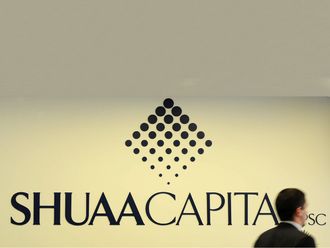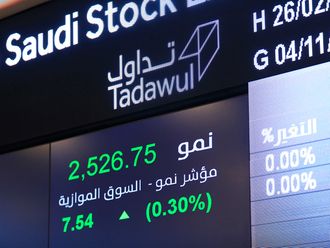Dubai: Liquidity, which has been taken away by the primary market, is likely to pick up in the UAE equity markets by April after the first quarter next year, when dividends will be announced by companies, market experts said.
IPO’s have become a very big competitor for secondary markets for liquidity. Those 5 IPO’s this year has sucked out Dh10 billion worth of liquidity from the markets. That has made the secondary market very weak in terms of these pressures, Mohammad Ali Yasin, managing director at NBAD Securities.
The Dh2.5 billion Initial Public Offering of Dubai Parks and Resorts’ institutional tranche was oversubscribed 65 times, while the retail tranche was oversubscribed 10 times. This took the total subscription to Dh110 billion as against the required Dh2.5 billion.
Emaar Malls Group’s IPO was more than 30 times oversubscribed for the institutional segment, and more than 20 times by retail investors.
The market witnessed its peak liquidity in late May at about Dh3 billion, when the UAE market was upgraded by the MSCI to emerging market, but volumes have been falling since then.
The competition for liquidity between primary and secondary market will continue next year, so that liquidity will not be coming to the market. If IPO activity continues on green field companies, we won’t be able to see this return of liquidity to the secondary market, until the probably the first positive sign could be around the first quarter, when we will get distribution for last year’s dividend and that would coincide with first quarter results for companies, said Yasin.
Companies will start announcing their first quarter results by end of April or May.
Foreigners flee:
“Some foreign investors have been selling aggressively and have left the market. Foreign investors are reallocating and reducing their exposure to GCC markets post the sell off in crude oil,” said Sebastien Henin, head of asset management at The National Investor.
Futures dropped as much as 2.5 per cent in London and 1.9 per cent in New York. Morgan Stanley lowered its 2015 estimate by 29 per cent in a report on Dec. 5, citing a decision by the Organisation of Petroleum Exporting Countries not to lower a 30 million-barrel-a-day output target. Banks including BNP Paribas SA, Credit Suisse Group AG, UBS Group AG and Barclays Plc have also cut since the 12-nation group’s Nov. 27 meeting, according to Bloomberg.
Crude fell into a bear market this year as a supply glut expanded and Opec chose to its output target unchanged. Better-than-forecast economic data from jobs to construction have propelled U.S. equities to seven straight weekly gains. Chinese trade data missed forecasts even as the nation’s surplus climbed to a record in November after an unexpected decline in imports on lower crude oil and other commodity prices.












